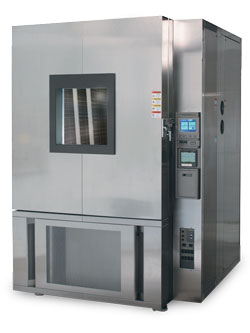PID Prevention
PID: what is it?
What is the temperature coefficient of a solar module?
Mechanical Load Test: conduction and specification
PV Insulation Resistance Test: what is it and why perform it?
UV Preconditioning Test: set up and purpose
Hail Impact Test: hail and solar panels
Damp Heat Test: testing set up and purpose
[...]

 PV thermal cycling test, source: espec.com[/caption]Different thermal expansion coefficients of encapsulation materials may cause problems to the soldering inside the solar panel. This may result in major defects, such as power degradation and interruption of the electric circuity.
PV thermal cycling test, source: espec.com[/caption]Different thermal expansion coefficients of encapsulation materials may cause problems to the soldering inside the solar panel. This may result in major defects, such as power degradation and interruption of the electric circuity.